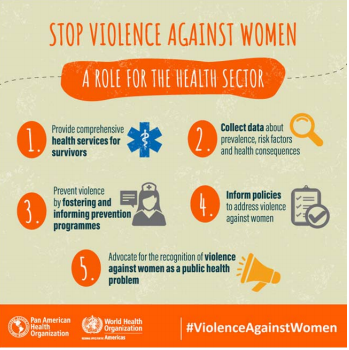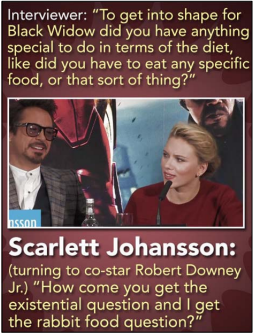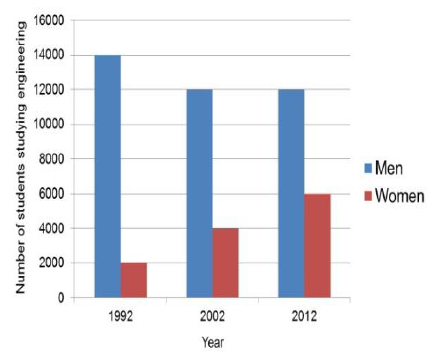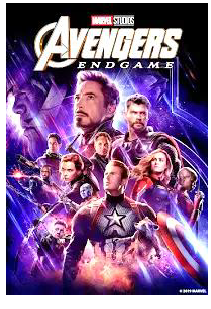Questões de Vestibular de Inglês - Interpretação de texto | Reading comprehension
Foram encontradas 4.863 questões
What about the artists?
The Guardian - Wed 14 Oct 2020
The government is deaf to the plight of freelance musicians and othercreatives
On Monday, a number of British arts organisations finally heard whether they had received grants from the £1.57bn bailout fund announced in July by the chancellor, Rishi Sunak. Not a moment too soon, institutions such as Wigmore Hall in London, Bristol Old Vic and the City of Birmingham Symphony Orchestra have been given a cash bufferthatshould keep them alive until March.
The welcome announcement has been marred, though, by the failure of the government to address the question of freelancers and self-employed people in the arts. In an interview with ITV last week, Mr. Sunak was asked what he thought professional musicians ought to do, given that they can’t earn enough to live. He answered that up to 3 million people in the country qualified for help under the self-employed support scheme. Pressed on whether musicians oughttofind differentwork, he mentioned retraining schemes that are "providing new and fresh opportunity”. People must adapt, he said. He added that it was untrue that there was no work for musicians. Music lessons, in his own household at least, were still going on.
Source: The Guardian, available at https://www.theguardian. com/commentisfree/2020/oct/14/the-guardian-view-on-saving-thearts-what-about-the-artists, accessed on October21st, 2020.
What about the artists?
The Guardian - Wed 14 Oct 2020
The government is deaf to the plight of freelance musicians and othercreatives
On Monday, a number of British arts organisations finally heard whether they had received grants from the £1.57bn bailout fund announced in July by the chancellor, Rishi Sunak. Not a moment too soon, institutions such as Wigmore Hall in London, Bristol Old Vic and the City of Birmingham Symphony Orchestra have been given a cash bufferthatshould keep them alive until March.
The welcome announcement has been marred, though, by the failure of the government to address the question of freelancers and self-employed people in the arts. In an interview with ITV last week, Mr. Sunak was asked what he thought professional musicians ought to do, given that they can’t earn enough to live. He answered that up to 3 million people in the country qualified for help under the self-employed support scheme. Pressed on whether musicians oughttofind differentwork, he mentioned retraining schemes that are "providing new and fresh opportunity”. People must adapt, he said. He added that it was untrue that there was no work for musicians. Music lessons, in his own household at least, were still going on.
Source: The Guardian, available at https://www.theguardian. com/commentisfree/2020/oct/14/the-guardian-view-on-saving-thearts-what-about-the-artists, accessed on October21st, 2020.
‘The Complete Stories,’ by Clarice Lispector

By Terrence Rafferty
July 27, 2015
There’s a whiff of madness in the fiction of Clarice Lispector. The “Complete Stories” of the Brazilian writer, edited by Benjamin Moser and sensitively translated by Katrina Dodson, is a dangerous book to read quickly or casually because it’s so consistently delirious. Sentence by sentence, page by page, Lispector is exhilaratingly, arrestingly strange, but her perceptions come so fast, veer so wildly between the mundane and the metaphysical, that after a while you don’t know where you are, either in the book or in the world. So it’s best to approach her with some caution. For the ordinary reader — that is to say, for most of us — immersion in the teeming mind of Clarice Lispector can be an exhausting, even a deranging, experience, not to be undertaken lightly. (Pack food, water, a first aid kit and plenty of sunblock.)
Her stories are full of strange words, in strange combinations, and her “Complete Stories” is a remarkable book, proof that she was — in the company of Jorge Luis Borges, Juan Rulfo and her 19th-century countryman Machado de Assis — one of the true originals of Latin American literature.
THE COMPLETE STORIES
By Clarice Lispector
Edited by Benjamin Moser
Translated by Katrina Dodson
645 pp. New Directions. $28.95.
(Adaptado de https://www.nytimes.com/2015/08/02/books/review/the-completestories-by-clarice-lispector.html. Acessado em 21/07/20.)
No texto acima, o livro de Clarice Lispector recebe uma
crítica
There will come soft rains and the smell of the ground, And swallows circling with their shimmering sound; And frogs in the pools singing at night, And wild plum trees in tremulous white; Robins will wear their feathery fire, Whistling their whims on a low fence-wire; And not one will know of the war, not one Will care at last when it is done. Not one would mind, neither bird nor tree, If mankind perished utterly; And Spring herself, when she woke at dawn Would scarcely know that we were gone.
(Disponível em https://poets.org/poem/there-will-come-soft-rains. Acessado em 24/08/2020.)
O poema destaca

(Disponível em https://www.paho.org/en/topics/violence-against-women. Acessado em 24/08/2020.)
Qual das medidas abaixo é recomendada no cartaz?

English lacks a gender-neutral singular pronoun to correspond with singular pronouns like everyone or someone, and as a consequence they has been used for this purpose for over 600 years. Recently though, they has also been used to refer to a person whose gender identity is nonbinary, a sense that is increasingly common in published text, social media, and in daily personal interactions between English speakers. There's no doubt that its use is established in the English language, which is why it was added to the Merriam-Webster dictionary in September of 2019. Nonbinary they was also prominent in the news in 2019. Congresswoman Pramila Jayapal (WA) revealed in April that her child is gender-nonconforming and uses they. And the American Psychological Association’s blog officially recommended that singular they be preferred in professional writing over “he or she” when the reference is to a person whose gender is unknown or to a person who prefers they.
(Adaptado de https://www.merriam-webster.com/words-at-play/word-of-the-year/ they. Acessado em 29/04/2020.)
De acordo com o texto, o fato de uma palavra simples, como o pronome “they”, ter sido escolhida como a palavra do ano de 2019 se justifica pela necessidade de
Catherine Fletcher, Tue 4 Feb 2020
The decision by a UK University to close history, modern languages and politics degrees in favour of more “careerfocused” courses has been widely criticised. The problem lies in reducing university education to what sells to employers. A society – and a world – urgently needs people who have the education to think about big issues, which aren’t only scientific or technological: they’re also about the ways that people have made, and continue to make, decisions. The humanities matter. And it matters that students from all backgrounds have the opportunity to join in these world-changing discussions.
Roger Brown, Mon 10 Feb 2020
Catherine Fletcher is completely correct to warn about the damage that current policies are doing to the humanities. But her warning comes much too late. As I and other scholars have shown, the problem started with a government green paper which declared that the fundamental purpose of higher education was to serve the economy. Until we recover the idea that higher education is as much about the public good as anything else, we will never be able to sustain the humanities as an essential component of a balanced curriculum. Unfortunately, there is very little sign that this has been grasped by any of our current policymakers.
(Adaptado de www.theguardian.com/education/2020/feb/10/humanities-are-notthe-right-courses-to-cut. Acessado em 22/05/2019.)
Os textos acima concordam quanto à identificação de
um problema nos cursos universitários no Reino Unido,
mas divergem quanto
(Adaptado de https://www.britannica.com/biography/Ludwig-van-Beethoven. Acessado em 29/07/20.)
A partir do conteúdo do texto, pode-se afirmar que

(Disponível em https://twitter.com/ajdewerd/status/1237495536036581379. Acessado em 30/07/2020.)
A resposta de Andrea ao tweet de Julieanne

(Disponível em https://www.cracked.com/blog/14-epic-comebacks-stars-gave-tostupid-interview-questions/. Acessado em 25/06/20.)
Em sua resposta, a atriz
Robot priests can bless you, advise you, and even perform your funeral
By Sigal Samuel Updated Jan 13, 2020, 11:25am EST
A new priest named Mindar is holding forth at Kodaiji, a 400-year-old Buddhist temple in Kyoto, Japan. Like other clergy members, this priest can deliver sermons and move around to interface with worshippers. Mindar is a robot, designed to look like Kannon, the Buddhist deity of mercy, and cost $1 million.
As more religious communities begin to incorporate robotics — in some cases, AI-powered — questions arise about how technology could change our religious experiences. Traditionally, those experiences are valuable in part because they leave room for the spontaneous and surprising, the emotional and even the mystical. That could be lost if we mechanize them.
Another risk has to do with how an AI priest would handle ethical queries. Robots whose algorithms learn from previous data may nudge us toward decisions based on what people have done in the past, incrementally homogenizing answers and narrowing the scope of our spiritual imagination. One could argue, however, that risk also exists with human clergy, since the clergy is bounded too — there’s already a built-in nudging or limiting factor.
AI systems can be particularly problematic in that they often function as black boxes. We typically don’t know what sorts of biases are coded into them or what sorts of human nuance and context they’re failing to understand. A human priest who knows your broader context as a whole person may gather this and give you the right recommendation.
Human clergy members serve as the anchor for a community, bringing people together. They provide human contact, which is in danger of becoming a luxury good as we create robots to more cheaply do the work of people. Robots, notwithstanding, might be able to transcend some social divides, such as race and gender, to enhance community in a way that’s more liberating.
Ultimately, in religion as in other domains, robots and humans are perhaps best understood not as competitors but as collaborators. Each offers something the other lacks.

Injured ape
Nisha Gaind (Bureau chief, Europe). This X-ray shows a baby Sumatran orangutan (Pongo abelii) with a fractured arm. Conservation workers rescued the animal, named Brenda, from a village on the Indonesian island where she had reportedly been kept illegally as a pet. As editors, we see lots of photographs of conservation, but this image struck me for many reasons: the ‘humanness’ of Brenda’s shape, her innocence and the dedication of the conservation centre, which flew in a surgeon to operate on the animal.
(N. Gaind e E. Callaway. The best science images of the year: 2019 in
pictures. Nature, v. 576, n. 7787, p. 354–359, 16/12/2019.)
Sobre o texto “The best science images of the year: 2019 in
pictures”, considerando a imagem radiográfica que ele traz,
é correto dizer:

TEXTO 1

(Gemma Danks. Science jokes for kids - with explanations and fun facts. Disponível em https://www.palebluemarbles.com/science-jokesfor-kids/. Acessado em 5/8/2020.)
TEXTO 2

Gemma Danks. Science jokes for kids - with explanations and fun
facts. Disponível em https://www.palebluemarbles.com/science-jokesfor-kids/. Acessado em 5/8/2020.)
Which are the fields of competence mentioned in the text that UNESCO looks for in NonGovernmental Organizations?
Which alternative shows the best summary of the graph?

Adapted from https://preply.com/en/blog/2018/08/17/charts-graphs-and-diagrams-in-the-presentation/
The fourth installment in the Avengers saga is the culmination of 22 interconnected Marvel films and the climax of an epic journey. The world's greatest heroes will finally understand just how fragile our reality is – and the sacrifices that must be made to uphold it – in a story of friendship, teamwork and setting aside differences to overcome an impossible obstacle.

https://play.google.com/store/movies/details/Marvel_Studios_Avengers
What is necessary for the heroes to do in order to win in the end of the saga?